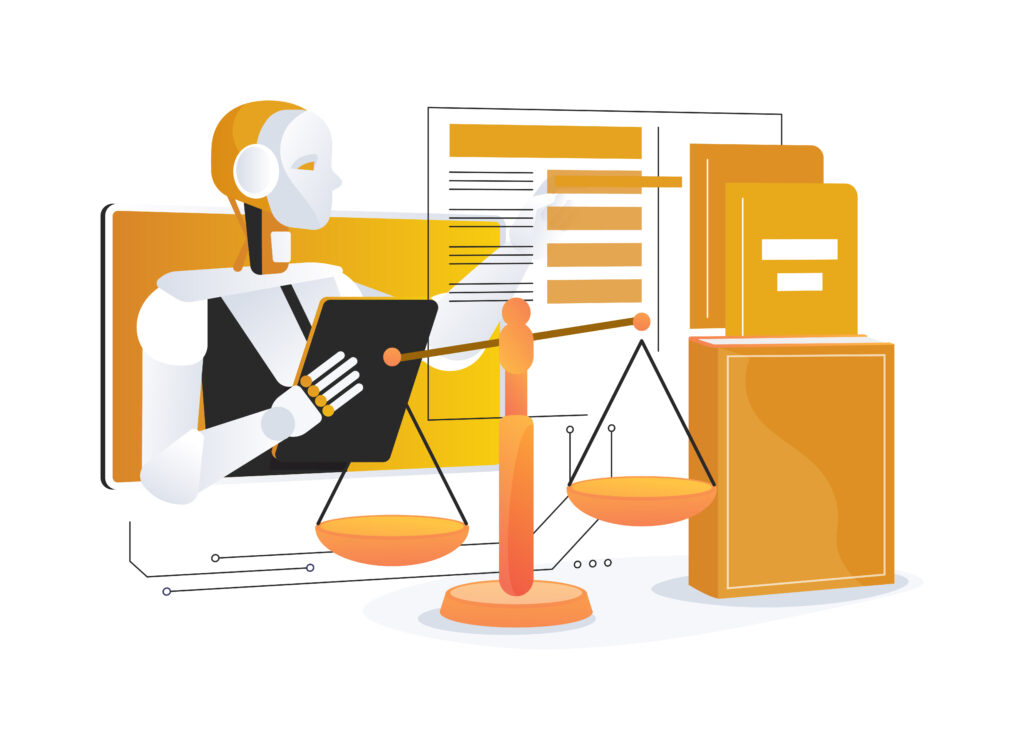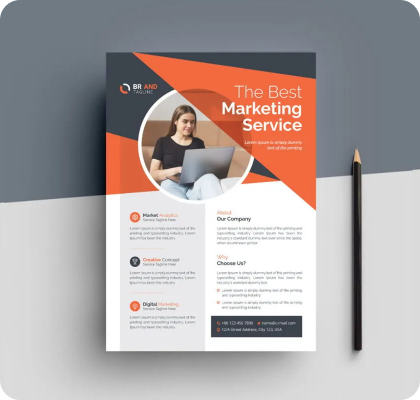The legal industry, often seen as traditional and cautious, is experiencing a tech-driven evolution. Artificial Intelligence (AI) is at the forefront of this change, offering law firms and legal departments powerful tools to automate routine tasks, analyze vast amounts of legal data, and improve client service. From contract drafting and review to legal research and even predicting case outcomes, AI is helping lawyers be more efficient and focus on higher-level work. Notably, a 2024 legal trends report found an astounding 79% of lawyers are using AI in their practice
, which marks a significant shift in adoption. In this post, we’ll explore how AI is transforming legal services, with a focus on contract automation and client-facing applications like chatbots and document analysis. We’ll also address ethical considerations (ensuring confidentiality and accuracy) and how law firms can implement AI while maintaining the rigorous quality clients expect. If you’re aiming to run a fast-growth, future-proof legal practice, understanding and leveraging AI is rapidly becoming a necessity.
AI for Contract Drafting and Review
Contracts are the lifeblood of legal practice – and also one of its most labor-intensive aspects. AI is revolutionizing how contracts are handled:
- Automated Drafting: AI-driven tools can now generate first-draft contracts based on templates and specific inputs. For example, if a client needs a Non-Disclosure Agreement (NDA), an AI like LegalZoom’s LISA or others can ask a series of questions (parties’ names, duration, scope, etc.) and then output a draft NDA in seconds. Law firms use these for efficiency – the lawyer then just reviews the draft for any necessary tweaks. This can cut down hours of work to minutes for standard contracts.
- Contract Review & Due Diligence: In mergers, financings, or any scenario involving reviewing piles of contracts, AI shines. Using Natural Language Processing (NLP), AI can extract key clauses (termination, liability, change of control, etc.) from hundreds of contracts and put them in a comparative report. For instance, when conducting due diligence, instead of junior associates manually reading every contract for change-of-control clauses, an AI can highlight which contracts need attention because they have a clause that triggers upon merger (saving enormous time). A famous study by LawGeex found that an AI contract review system achieved **94% accuracy spotting risks in NDAs, compared to 85% by experienced lawyers – and did it in 26 seconds vs. 92 minutes (on 5 NDAs)
. That’s a stunning example of speed and accuracy gains.
- Clause Comparison and Libraries: AI learns from a database of contract clauses what “market standard” is. So if you want to know if an indemnity clause in a draft you received is unusual, AI can flag that it’s outside the norm of similar contracts. This helps in negotiation – you can confidently say, “Clause X is atypical compared to industry standard; here’s a preferred wording.” Some advanced tools even suggest alternative wording instantly.
- Risk Flagging: Beyond just finding clauses, AI can assess language risk. For example, it might flag a seemingly innocuous sentence that, based on case law data, could be interpreted unfavorably. It’s like having a risk radar. Thomson Reuters has such AI in their contract tools, and others do as well.
For corporate legal teams, this means faster deal cycles and fewer errors. For law firms, it means they can handle more deals with the same number of attorneys (great for scaling) and focus human expertise on complex or bespoke issues rather than boilerplate.
One might ask, does this reduce billable hours? In some models, yes, but progressive firms see it as a chance to reallocate time to higher-value advisory work (and perhaps use alternative fee arrangements that favor efficiency, which clients appreciate).
AI for Legal Research and Case Prediction
Legal research is another time sink being transformed:
- Smart Research Assistants: Tools like Casetext’s CoCounsel (powered by OpenAI) or Westlaw Edge use AI to understand queries in plain English and provide direct answers from case law or statutes. Instead of sifting through dozens of cases, a lawyer can ask, “What are the key elements needed to prove undue influence in contract law in California?” and the AI will summarize relevant case law (with citations). It’s like having a junior attorney who’s read everything and instantly points you to the right sources
. This helps ensure no precedent is missed and can surface creative arguments by finding analogous cases in other domains that a manual search might not have caught.
- Predictive Analytics for Litigation: By analyzing historical cases and judge rulings, AI can predict win rates or likely outcomes. For example, Lex Machina (by LexisNexis) provides analytics on how a particular judge tends to rule on patent cases, or the average time to settlement for employment disputes of certain types. If 80% of similar cases settle before trial, and AI identifies that trend, lawyers can advise clients on strategy (e.g., perhaps pushing for settlement early). Some startup AIs even attempt to predict case outcomes given facts – not 100% reliable, but an interesting guidance tool.
- E-Discovery: AI has been used for years in e-discovery (reviewing huge sets of documents for litigation) under the term “predictive coding.” Modern AI makes it even better. It learns from a lawyer marking which documents are relevant or privileged and then rapidly sorts through terabytes of emails and files to find the rest. This massively reduces the amount of documents humans need to read, which can shorten discovery timelines by months and save clients a fortune.
- Brief Analysis: Ever wish you could find holes in the opposing counsel’s argument quickly? AI can analyze an uploaded legal brief and suggest counter-arguments or point out missing precedent that could strengthen or weaken the points. Some tools do this, essentially acting like a “second set of eyes” that’s extremely well-read.
The stat mentioned in the intro – 79% of lawyers using AI
– likely includes heavy use of research and e-discovery tools like above. Also, Thomson Reuters noted only 10% of firms have formal policies guiding AI use
, which means usage is outpacing governance – but that’s catching up as the tech becomes ubiquitous.
Client-Facing AI: Chatbots and Self-Service
Law firms and legal websites are also deploying AI to improve client service:
- Legal Chatbots: These can handle initial consultations or intake by asking clients about their situation. For example, a law firm’s website might have “Ask our AI” for basic legal questions. A prospective client might type, “I was in a minor car accident, should I see a lawyer?” The bot can ask a few questions (injury? insurance? fault?) and then give a preliminary guidance: “It sounds like you may have a claim given XYZ, and consulting a lawyer would be beneficial. Would you like to schedule a free consultation?” capturing the lead. Or for existing clients, a bot can answer, “What’s the status of my case?” by pulling from the firm’s case management system: “Your next hearing is on Aug 5. We’ve filed all required documents and are awaiting the defendant’s response.”
- Document Automation for Clients: Some firms let clients fill out AI-powered questionnaires that then draft documents. For instance, an estate planning firm might have an online tool for a basic will. The AI guides the user through (in plain language: “Do you have minor children? Y/N. If yes, who do you want as guardians?”) then compiles a draft will for the attorney to review. This not only saves attorney time but also engages the client actively, making the process faster and often cheaper – a selling point.
- 24/7 Availability: Clients often stress and have questions after hours. An AI chatbot that can answer common questions about, say, the stages of a lawsuit or what to do when served with papers, provides immediate reassurance. Of course, it has to be generic info (not specific legal advice) unless it’s a closed client portal with proper context. But even something like, “I missed a court deadline, what happens?” where the bot can say, “That could be serious; generally, courts might dismiss a case if a key deadline is missed. You should contact your attorney ASAP. Would you like me to notify the firm to call you first thing in the morning?” – is valuable.
- Language Translation: AI (like Google’s advanced translation or DeepL) can real-time translate client communications or documents. So a firm can better serve clients with limited English by instantly translating forms or evidence documents from their language, and also respond in that language if needed. This widens client base and improves accuracy in cross-border cases.
Case example: DoNotPay, dubbed “the world’s first robot lawyer,” is an AI service that helps people contest parking tickets, handle small claims, etc., through a chatbot interface and automated document generation. It’s a direct-to-consumer example that shows how much legal process can be automated. Law firms are adopting similar internal tools to give clients quick advice for common issues (like a landlord/tenant question for a firm that does a lot of housing law) as a value-add or lead-gen.
Ethical Considerations and Quality Control
The use of AI in law raises important issues:
- Confidentiality: Lawyers have strict duties to keep client info confidential. When using cloud-based AI, firms must ensure the data is secure and not used to train models for others (most enterprise legal AI tools do maintain confidentiality and isolate data). Also, any client communication with an AI assistant must be secured and likely privileged if it’s on behalf of the lawyer. Clarity on these points is key (e.g., telling clients “You can input info into our secure chatbot, it’s as confidential as emailing us”).
- Accuracy and Bias: AI can make mistakes – perhaps misinterpreting a legal nuance or missing a crucial case that a human would catch due to context. Lawyers cannot blindly trust AI outputs. The ABA and other bodies emphasize AI is a tool, not a replacement for a lawyer’s independent judgment. For example, the recent news of a lawyer who submitted a brief full of fake AI-generated case citations (because he didn’t verify them) highlights the need for verification. All AI-drafted content must be reviewed by a qualified attorney. Also, AI trained on past legal data might carry biases (e.g., if historically certain arguments were overlooked due to bias, the AI might not surface them). Lawyers need to be aware and ensure fairness and due process aren’t compromised.
- Competence and Training: There’s an evolving duty of tech competence – lawyers should understand at least basically how these tools work to use them properly. Relying on AI without understanding its limits could be seen as incompetence. The good thing is many tools are user-friendly, but training lawyers (especially those not tech-savvy) is crucial. Possibly, firms will have “legal tech specialists” or require CLE (Continuing Legal Ed) in AI use.
- Client Transparency: Should clients be informed when AI is used on their case? Arguably, for most back-office stuff, they don’t need to know (just like a client doesn’t usually know which software you used for research). But if AI interacts with a client (like a chatbot giving them info), it’s ethical to disclose it’s an AI, not a human, to avoid confusion. Many clients won’t mind as long as they get correct answers.
- Job impacts: Junior lawyers and paralegals historically did a lot of the grunt work now being automated. There’s concern about reducing opportunities for young lawyers to learn by doing that work (e.g., reading lots of cases or contracts). Law firms might need to consciously train juniors in other ways to ensure they still build substantive knowledge. Meanwhile, those staff might fear job loss. In reality, many firms redeploy them to more meaningful work (client contact, business development, etc.) rather than cut jobs – at least in the short term. It’s a balance and something each firm handles differently.
Implementation for Law Firms
For law firms looking to integrate AI:
- Identify High-Impact Use Cases: Where do your attorneys spend a lot of non-value-added time? Common picks: contract review, discovery, research memos, standard doc drafting, intake. Pick one to pilot.
- Choose Reliable Tools: There are established legal tech AI providers (Kira for contracts, Casetext or Westlaw Edge for research, etc.). Evaluate a few, looking at accuracy, data security, integration with your systems, and cost. Some are SaaS subscriptions, others might be per-use.
- Train the Model if Needed: Some AI works off-the-shelf, others allow training on your own data (like your template contracts or past briefs). Feeding it your firm’s knowledge can improve relevance. For example, an AI that knows your previous successful arguments or preferred language for contracts will serve up those solutions more.
- Start with Non-Critical Tasks: Initially, use AI on tasks where a mistake is low-risk and can be easily corrected. Build confidence and refine your processes. Over time, expand its use.
- Develop Policies: Address confidentiality, verification, and who is responsible if AI outputs an error. Typically, it’s still the lawyer’s responsibility. Having a policy that all AI-generated work product must be reviewed and approved by a supervising attorney, for instance, is wise.
- Monitor Outcomes: Are you seeing efficiency gains? Track metrics like time saved, number of contracts reviewed, etc., and also quality metrics (maybe error rates pre and post AI implementation).
- Keep Clients in the Loop: You may market your AI use as an advantage (“We leverage advanced AI to provide faster service and thorough analysis, saving you time and money”) because many clients will value that. But also reassure that everything is lawyer-verified.
Conclusion
AI is no longer a futuristic concept for the legal field; it’s here, proving its worth in daily practice. By automating routine tasks like contract review, lawyers can reclaim hours that can be redirected to strategy, advocacy, and complex problem-solving – the areas where human judgment is irreplaceable. This means handling more cases or deals in less time, responding to clients faster, and potentially operating with leaner teams (or at least not having to scale headcount linearly with workload).
For fast-growth law firms, embracing AI can be a competitive differentiator. It can enable alternative fee models (like flat fees for certain services) to be highly profitable because your costs and time are reduced. It can also improve work-life balance for attorneys by offloading drudgery (imagine no more all-nighters doing document review – the AI handles the heavy lifting while you get some sleep and then make key decisions with a fresh mind).
However, success with legal AI requires a blend of innovation and caution: innovate by integrating these tools and rethinking processes, but exercise caution through diligent oversight and adherence to ethical standards. Law is ultimately about judgment, and AI is a powerful advisor and assistant, but not the decision-maker.
The firms that figure out this balance will likely outpace those that stick to the old ways. They’ll be able to serve more clients, possibly at lower cost, with equal or better quality – a formula for growth and leadership in the market.
Is your legal practice ready to harness the power of AI? Don’t let your firm fall behind in efficiency or client service. Contact our legal tech consultants for a tailored assessment of where AI can make the biggest impact in your workflow – be it contract management, research, or client intake. We’ll help you choose and implement the right AI solutions securely and effectively, and train your team to make the most of them. Embrace AI now to automate the mundane and elevate the profound in your practice. The result? Happier lawyers, happier clients, and a future-ready law firm that’s primed to grow. Let’s bring your firm into the new era of legal services.









